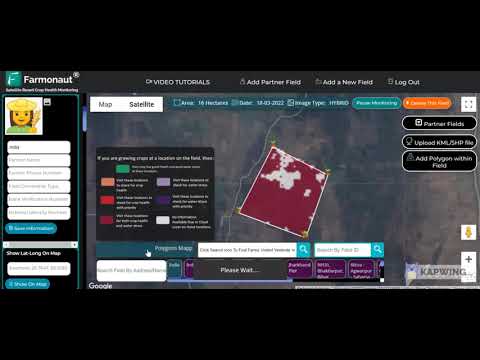Preventing Environmental Disasters: Oil Spill Containment and Theft Prevention Strategies in Oklahoma’s Energy Industry
“Oil theft in Oklahoma led to a spill causing significant damage, highlighting the need for enhanced security measures in the industry.”
In the heart of Oklahoma’s energy industry, a recent incident has brought to light the critical importance of oil spill prevention and the dire consequences of theft in the oil sector. As we delve into this alarming event, we’ll explore the multifaceted challenges faced by the industry and the strategies being implemented to safeguard both the environment and valuable resources.

The Incident: A Wake-Up Call for the Industry
In Sperry, Oklahoma, what could have escalated into an environmental disaster was narrowly averted thanks to the vigilance of local oilman Chris Pillers. The incident unfolded when thieves, driven by the allure of valuable brass components, breached security measures and stole valves from an oil tank. This brazen act of theft resulted in a significant oil spill, with an estimated 80 barrels of oil spilling onto the property.
The impact of this incident was immediate and severe. The damages exceeded $4,000, a substantial blow to a small operator like Pillers. “In the oil business, a lot of people think that anyone in there is rich, and that couldn’t be farther from the truth,” Pillers remarked, highlighting the financial strain such incidents place on smaller operators in the industry.
Containment Efforts: The Unsung Hero
While the theft and subsequent spill were undoubtedly concerning, a critical safety measure proved its worth in this incident. A berm, a mandatory containment structure in the oil industry, successfully prevented the spilled oil from spreading further. This containment method, often overlooked in discussions about oil field operations, demonstrated its vital role in environmental disaster prevention.
The effectiveness of the berm in this case underscores the importance of adhering to oil industry safety regulations. These regulations, often seen as burdensome by some operators, are designed precisely for scenarios like this, where unforeseen events could lead to catastrophic environmental consequences.
The Aftermath: Cleanup and Recovery
In the wake of the spill, Pillers, along with local officials, initiated a comprehensive cleanup operation. This process involves several critical steps:
- Containment of loose fluids to prevent further spread
- Removal of contaminated soil to mitigate long-term environmental impact
- Restoration of the affected area to its original state
The cost of oil spill cleanup is substantial, with recovery costs running into thousands of dollars. Moreover, the process of restoring full operations is expected to take approximately seven weeks, further impacting the business’s productivity and revenue.
The Ripple Effect: Impact on Local Communities
The environmental impact of oil theft extends far beyond the immediate vicinity of the spill. Local landowners Laura and David McMullen, who have previously fallen victim to property theft, voiced their concerns about the broader implications of such incidents.
“Everyone is being affected by this just because someone or a group of people want to steal a little fitting,” Laura McMullen stated, emphasizing the far-reaching consequences of these thefts. The potential for environmental harm is particularly alarming, as David McMullen pointed out, “There’s a creek just off the north side of where this tank battery is that oil could have very well ended up downstream several miles.”
This incident highlights the delicate balance between industrial operations and environmental preservation in Oklahoma’s energy sector. The potential for oil to contaminate water sources poses a significant threat to local ecosystems and communities, underscoring the need for robust oil spill containment methods.
Preventive Measures: Enhancing Security and Awareness
In response to this incident and the ongoing threat of theft, operators like Pillers are taking proactive steps to enhance oil lease property protection. These measures include:
- Installing additional cameras to improve surveillance
- Erecting warning signs to deter potential thieves
- Reinforcing fences and other physical barriers
- Implementing advanced oil industry surveillance systems
The implementation of these security measures represents a significant investment for small operators. However, when weighed against the potential costs of spills and environmental damage, such investments are increasingly seen as necessary in the industry.

The Role of Technology in Prevention
As the industry grapples with these challenges, technology is emerging as a crucial ally in the fight against theft and environmental disasters. Advanced monitoring systems, such as those offered by companies like Farmonaut’s fleet management solutions, are becoming increasingly important in the oil and gas sector. These systems provide real-time data on equipment status, enabling quick responses to potential issues before they escalate into major problems.
Furthermore, the integration of satellite technology and AI-driven analytics is revolutionizing how the industry approaches risk management. For instance, Farmonaut’s large-scale management tools, while primarily designed for agricultural applications, offer insights that can be adapted for monitoring large oil field operations, potentially aiding in early detection of anomalies that could lead to spills.
Regulatory Compliance and Industry Standards
The incident in Sperry has also reignited discussions about the importance of compliance with industry regulations. The Oklahoma Corporation Commission, which oversees oil and gas operations in the state, plays a crucial role in setting and enforcing safety standards. The McMullens’ praise for Pillers’ constant monitoring and adherence to regulations highlights the critical role that individual operators play in maintaining industry-wide safety standards.
Compliance with these regulations is not just a legal obligation but a fundamental aspect of responsible operations in the oil and gas sector. It encompasses various areas, including:
- Regular inspections of equipment and infrastructure
- Proper maintenance of containment structures like berms
- Adherence to reporting protocols for incidents and spills
- Implementation of security measures to prevent unauthorized access
“Small oil operators face challenges in implementing comprehensive spill containment methods, with berms being a crucial preventive measure.”
Economic Implications of Oil Theft and Spills
The oil theft impact on local businesses extends beyond the immediate costs of cleanup and lost product. For small operators like Pillers, such incidents can have devastating financial consequences. The stolen valves, while valuable for their metal content, represent only a fraction of the total cost incurred due to the theft. The real economic impact comes from:
- Lost production during downtime
- Costs associated with cleanup and environmental remediation
- Potential fines and legal fees if environmental regulations are breached
- Increased insurance premiums following such incidents
Moreover, the ripple effects of these incidents can be felt throughout the local economy. Suppliers, contractors, and service providers who depend on the oil industry may also experience reduced business activity during recovery periods.
Environmental Concerns and Long-term Impact
While the immediate containment of the spill in Sperry prevented a larger environmental disaster, the incident raises important questions about the long-term effects of such events on local ecosystems. Oil spills, even when contained, can have lasting impacts on:
- Soil quality and composition
- Groundwater resources
- Local flora and fauna
- Air quality due to volatile organic compounds released during spills
The potential contamination of water sources, as highlighted by the proximity of the creek to the spill site, is a particular concern. Such contamination can have far-reaching consequences for both wildlife and human communities dependent on these water resources.
Community Awareness and Education
Preventing future incidents requires not just technological solutions and regulatory compliance, but also increased community awareness and education. Local communities play a vital role in early detection and reporting of suspicious activities around oil and gas facilities. Initiatives to enhance community engagement might include:
- Public awareness campaigns about the environmental and economic impacts of oil theft
- Educational programs in schools and community centers about the oil industry and its importance to the local economy
- Establishment of community watch programs specifically focused on oil and gas facilities
- Regular communication between operators and local residents about safety measures and emergency procedures
By fostering a sense of shared responsibility, these efforts can create a more vigilant and informed community, better equipped to protect both the environment and the local economy.
Innovative Solutions for a Sustainable Future
As the industry evolves, innovative solutions are emerging to address the challenges of theft prevention and environmental protection. One such solution is the integration of blockchain technology for enhanced traceability and security. Farmonaut’s traceability solutions, while primarily developed for agricultural supply chains, offer insights into how similar technologies could be applied in the oil and gas sector to track the movement of oil and equipment, potentially deterring theft and unauthorized access.
Additionally, the use of advanced analytics and machine learning algorithms can help in predicting potential vulnerabilities in oil field operations. These predictive models can analyze patterns in theft incidents, equipment failures, and environmental conditions to identify high-risk areas and times, allowing operators to implement targeted preventive measures.
The Path Forward: Balancing Industry Needs and Environmental Responsibility
As we reflect on the incident in Sperry and its broader implications, it’s clear that the path forward for Oklahoma’s energy industry must balance economic interests with environmental stewardship. This balance requires a multi-faceted approach that includes:
- Continued investment in security and surveillance technologies
- Stricter enforcement of existing regulations and consideration of new, more comprehensive safety standards
- Collaboration between industry operators, local communities, and regulatory bodies
- Ongoing research and development of more effective spill containment and prevention technologies
- Integration of sustainable practices throughout the oil and gas supply chain
By adopting these strategies, the industry can work towards minimizing the risk of environmental disasters while maintaining its vital role in Oklahoma’s economy.
Recommended Oil Spill Prevention and Containment Measures
| Measure | Description | Estimated Effectiveness |
|---|---|---|
| Surveillance Systems | Advanced cameras and sensors for 24/7 monitoring of oil facilities | High |
| Berms | Raised barriers around oil tanks to contain potential spills | High |
| Regular Valve Inspections | Scheduled checks of all valves and fittings to ensure integrity | Medium |
| Security Personnel | On-site guards to deter theft and unauthorized access | Medium |
| Electronic Tracking Systems | GPS and RFID technology to monitor equipment and oil movement | High |
| Community Watch Programs | Engaging local residents in reporting suspicious activities | Medium |
| Advanced Locking Mechanisms | High-security locks and seals on valves and access points | High |
| Environmental Sensors | Devices to detect leaks and spills in real-time | High |
Conclusion: A Call for Collective Action
The incident in Sperry serves as a stark reminder of the delicate balance between industrial operations and environmental preservation in Oklahoma’s energy sector. It highlights the need for constant vigilance, robust security measures, and unwavering commitment to safety protocols. As we move forward, it’s clear that preventing environmental disasters and safeguarding our natural resources requires a collective effort from industry operators, regulatory bodies, and local communities.
By embracing technological advancements, strengthening regulatory frameworks, and fostering a culture of environmental responsibility, Oklahoma’s oil and gas industry can continue to thrive while minimizing its ecological footprint. The path ahead may be challenging, but with dedication and innovation, we can create a more secure and sustainable future for the energy sector and the communities it serves.
FAQs
- What are the most common causes of oil spills in Oklahoma?
The most common causes include equipment failure, human error, and theft of oil or equipment. - How effective are berms in containing oil spills?
Berms are highly effective in containing localized spills, often preventing widespread environmental damage. - What immediate steps should be taken if an oil spill is discovered?
Immediately contain the spill, notify relevant authorities, and begin cleanup procedures as per regulatory guidelines. - How can small oil operators improve their security measures?
Small operators can install surveillance systems, reinforce physical barriers, and implement regular security patrols. - What are the long-term environmental impacts of oil spills?
Long-term impacts can include soil contamination, groundwater pollution, and damage to local ecosystems.
For more information on advanced monitoring solutions that can be adapted for environmental protection in various industries, visit Farmonaut’s web application.
Earn With Farmonaut: Join our affiliate program and earn 20% recurring commission by helping farmers save 10%. Onboard 10 Elite farmers monthly to earn a minimum of $148,000 annually—start now and grow your income!







